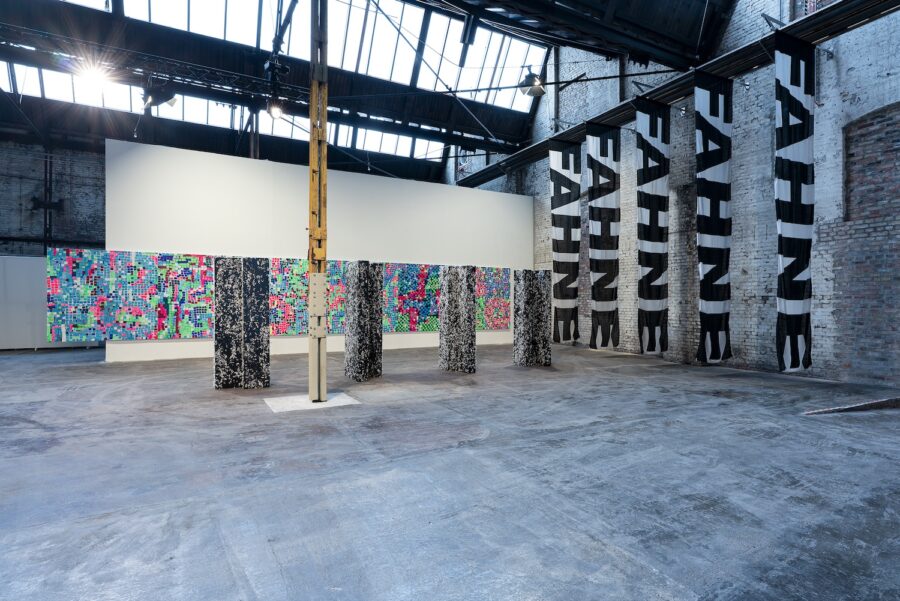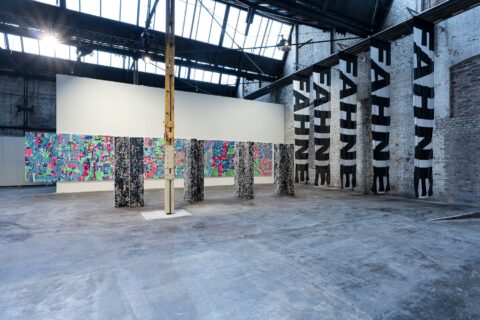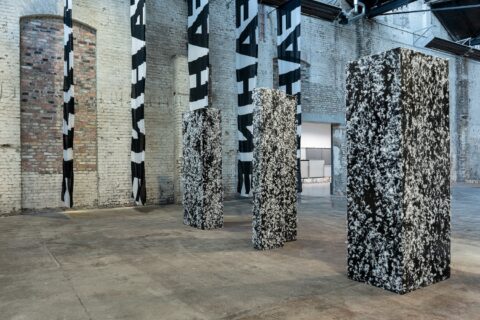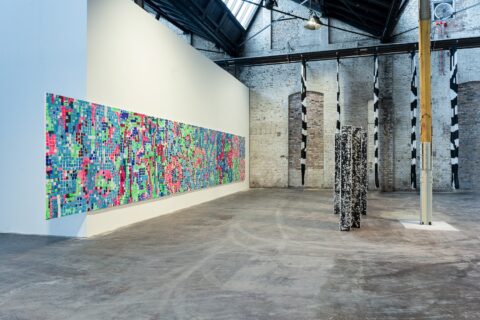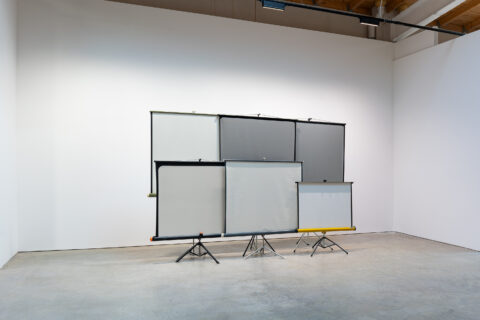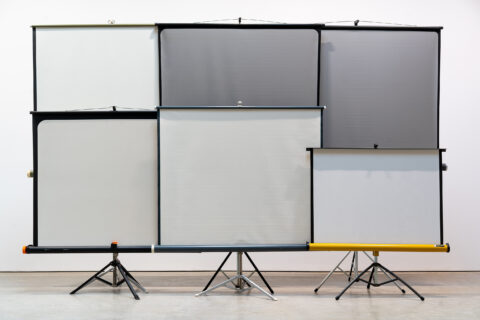Heimo Zobernig Heimo Zobernig @ HALLEN 6
06/09/2025 – 14/09/2025
Opening: Saturday, September 6, 2025, 11am – 8pm
Opening hours during Berlin Art Week 2025:
Sunday, September 7, 11am – 8pm
Wednesday, September 10 - Sunday, September 14th, 11am – 8pm
Wilhelm Hallen
Kopenhagener Strasse 60-68
13407 Berlin
Press Release
Our presentation at the Wilhelmhallen focuses on a theme central to Zobernig's work, namely his interest in serial and technically reproduced images, especially those from print, television, and video technology. Since the 1990s, he has repeatedly incorporated television test patterns (stripes) and CMYK spectra into his image compositions. Since the 2000s, he has been using what is known as Video Trevira (red, blue, green) as a painting surface.
FAHNE
The five-part installation consisting of five-meter-long flags is part of a series of works in which Zobernig responds tautologically to invitations for art-in-architecture projects. One example of this is the Messeplatz in Basel. There, the words MESSE BASEL are embedded in the asphalt in large Helvetica letters, which can only be seen from a bird's eye view (for example, on Google Earth). Flags usually have strong identificatory meanings; they represent countries or groups. Arranged in rows, they appear monumental. Writing FAHNE (flag) on a flag short-circuits these meanings and directs the gaze away from the meaning and toward the pure object.
SCULPTURE KIT
A four-part black cardboard sculpture, whose surfaces are covered with white feathers, functions as a construction-kit (Bausatz) for a sculpture. The four parts can exist individually and, when pushed together, form a block. The first feather sculpture was created in the late 1980s. The construction-kit principle is its logical continuation in Zobernig's cosmos of serial compositions.
The work consists of four upright cubic forms with Tetris-like floor plans that, when interlocked, create a closed cuboid. These architecturally evocative sculptures were constructed from cardboard, their surfaces coated with black synthetic resin varnish and entirely covered with white goose down. They recall Zobernig’s early cardboard objects, while his use of feathers also resonates with references to minimalist sculpture from the 1980s.
PIXEL PAINTINGS
In the pixel paintings created since 2014, the pixel elements are now highly resolved and translated onto the canvas in irregular squares, some of them neon-colored. Some of these are abstract images that seem to capture the moments when pixels on a screen collapse in order to reform. In addition, there are text images with simple words such as LOOK, NEW VIDEO, or OH NO. The greater the distance from the viewer, the more clearly the words in the images can be read. In his major retrospective at Vienna's Mumok in 2021, Zobernig displayed all of his pixel paintings in one room, hung in rows, work to work. He now returns to this form of presentation at the Wilhelmhallen, showing an installation of six canvases whose order is simply determined by their date of creation.
PROJECTION SCREENS
Zobernig regularly stages the means of presentation, as in the installation UTV Fernsehstudio (UTV Television Studio) or the Super 8 projection screen installations, a version of which we are presenting at the Wilhelmhallen. These projection screens were often used to watch home Super 8 films in private households and were later discarded when video technology replaced Super 8. Zobernig found the screens at Caritas, where items from apartment clearances are collected, which in Zobernig's eyes represent a kind of cultural memory. Projection screens usually function as neutral carriers for images. Zobernig frees them from this instrumental role and emphasizes their presence as material, sculptural, and spatial entities. Detached from their utilitarian purpose, they no longer fade into the background but are perceived as independent objects. Unlimited videos form a separate group of works in Zobernig's oeuvre. In his Video No. 23, Zobernig captures on video his slapstick attempts to set up Super 8 screens.
